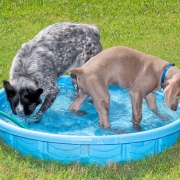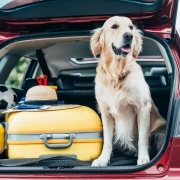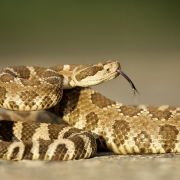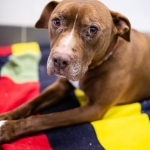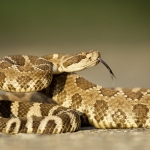We are entering the hottest time of the year, with summer temperatures sometimes eclipsing 100 degrees. Due to these rising temperatures, July is observed as National Pet Hydration Month to help pet owners know the symptoms and dangers of dehydration and overhydration.
Here are common symptoms of dehydration:
- Loss of appetite
- Reduced energy levels
- Lethargy
- Panting
- Sunken, dry-looking eyes
- Dry nose and gums
- Loss of skin elasticity
If you are unaware of how to check for skin elasticity, gently pinch your pet’s skin between your thumb and forefinger. In well-hydrated animals, the skin will instantly spring back into position while it will take longer in dehydrated pets.
It’s important to know that, just like dehydration, overhydration can become a severe issue for your four-legged family members. While situations like this are rare, water intoxication can affect pets that ingest large quantities of water throughout the day. Symptoms include:
- Loss of coordination
- Lethargy
- Bloating
- Vomiting
- Glazed eyes
- Excessive salivation
- Difficulty breathing
How much water should your pet be consuming daily? The general rule of thumb is one ounce of water per pound of body weight daily. For some pets, it may be tough to get them to focus on drinking that much water. But here are some ideas to get them more interested in staying hydrated:
- Always provide your pet with fresh water and make sure their bowl is clean daily.
- Try to avoid using a metal bowl outside. The metal will heat up quickly in the summer sun, which will affect the taste.
- Try adding ice cubes to your pet’s water bowl as they love their frozen treats!
Our companions come in a variety of shapes and sizes, so their water needs will vary. Keep an eye on them, as no one knows them better than you do!

